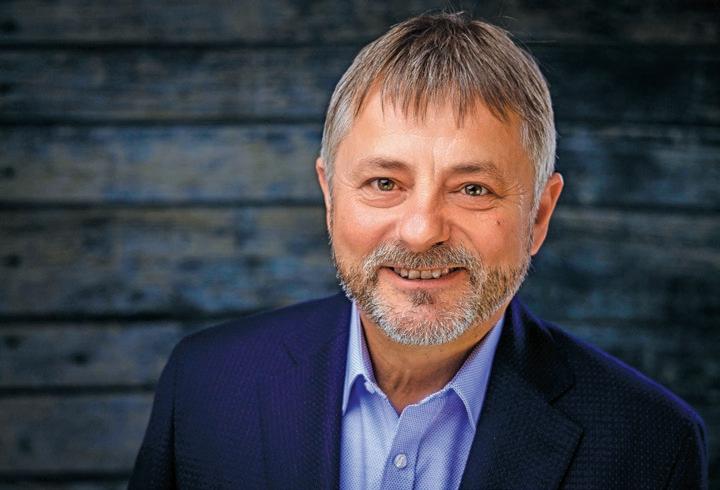
11 minute read
Bob Beebe
Bob Beebe has been involved in the energy sector for four decades. But his most recent role, as CEO of the Little Green Energy Company, has seen him more passionate about the industry than ever. He spoke to us about the impact of renewable energy, and its potential to benefit the whole island.
With energy prices rising and the impact of climate change ever more daunting, it’s perhaps unsurprising that the Little Green Energy Company is in demand. What may be less expected is why people are coming to Bob to search out domestic renewables.
Advertisement
“I would estimate that around 80% of our customers say they want to move into renewables because they want to do the right thing. For most people, it’s not really about the money, it’s about their impact on the environment. But with the spiralling cost of energy, the payback period on expenditure on renewables is coming down so it’s a win in every area.” As for what those customers are looking for, Bob says it is evolving all the time. Solar panels are usually the first choice, but the introduction of Tesla powerwalls which allow homes to store energy and then use it once the sun has gone has been a real game-changer.
“It’s the democratisation of energy, and I think that’s the future. People are now empowered to do it themselves. They can generate and store their own electricity, and homes can now be virtually selfsufficient in their energy use solely from zero carbon generating technology. “What we do find people are keen to invest in is the right technology; understandably, they want to be certain that it will work for them. The solar panels now available have a 40-year warranty, which makes justifying the payback an easy calculation.”
Bob understands the argument that not everyone can afford to install the technology, but he still believes strongly that everyone should be able to access clean energy, whether that is through government subsidies or private companies providing the technology and benefiting from the energy produced.
“If the States incentivised the market we could support the grid and produce more locally generated electricity. But the whole mindset needs to change. It’s why the upcoming electricity strategy is crucial and I hope we see some genuine change from it, with renewables put very much at the forefront.
“Everyone should have access to renewable energy, no matter where they live. If you live in a flat you should be able to buy locally produced energy from the supplier. If you live in a house but can’t afford panels, then there should be arrangements with private
companies where they can be put on your house anyway, with the energy supplied to the grid for you to then purchase by the unit.”
Bob’s passion for the subject is very clear. He thinks the island could set a perfect example to elsewhere, while also having the potential to be a testbed for new ideas and research in wind and tidal energy as well as solar.
“Imagine our island being a place where every home has access to local sunshine generated electricity and is able to store it to reduce the carbon footprint and become even more energy independent. If you think ambitiously about it, there is potential for an energy transition to a low carbon economy. This would not only fuel job opportunities in the clean energy industry but would provide greater relief on energy bills and result in significant local reductions in emissions and overall energy demand.”
For Bob, the progression of technology means that turning Guernsey into a ‘green island’ is becoming ever more viable. He would like to see large scale renewable systems and battery storage options considered in the island to supply the bulk of the population’s needs.
“Solar technology has come on a huge amount over the past decade. I recently visited a solar farm in west Wales, which was situated next to another one built around 10 years ago. At the new one, the panels were half the size of the older ones but were far more powerful – it’s very impressive how the technology has advanced and it offers up so much opportunity.”
One of the factors holding some back when considering domestic renewables is not being incentivised enough to feed excess renewable energy back into the grid for the benefit of all islanders. Bob would like to see more done to encourage locally produced renewable energy to be put into the grid from individual users, as that way more islanders are able to access locally generated renewable energy. Bob says modern technology means producing your own energy couldn’t be simpler now. “When it comes to the Tesla Powerwall in conjunction with solar PV panels, the entire system is carefully set up to divert power to heat water by charging the immersion cylinder, whilst charging up the Powerwall and powering your home. Even an electric vehicle can be charged before any power is exported back to the grid. Additionally, it’s very intelligent about learning your usage patterns and routines to ensure that power is available at the time you want it.”
But while renewable energy is the main focus of Bob’s working life, he thinks the island can do even more to set itself up for success. Having recently put external wall insulation on his own house and seen his energy use drop dramatically, he is a keen advocate for improving building standards and encouraging less demand for energy in the first place.
“Current building standards call for very low heat loss construction technology to be used, but many existing buildings have very poor thermal energy saving qualities. They could really benefit from energy saving retrofitting technology investment.
“I think the States should give due consideration to offering subsidies to encourage energy saving upgrades across the island’s housing stock as part of its energy policy. This would result in the overall energy consumption of islanders being reduced, and would help us move towards our net zero target by 2050.”
Guernsey’s new electricity strategy will be published and debated by the States next year, and Bob is hoping those in government will be as ambitious for the island as he is.

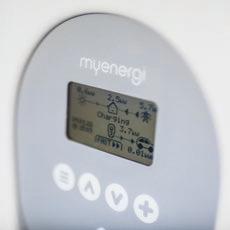
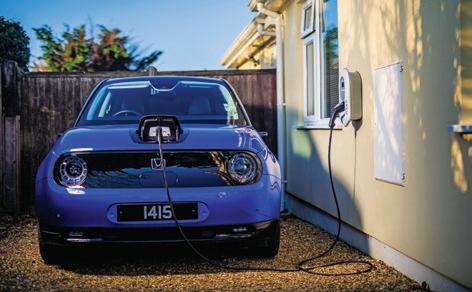

GREEN GUERNSEY
With energy prices rising and environmental awareness becoming ever more a consideration for many, Guernsey’s electricity strategy is in the spotlight. The Committee for the Environment and Infrastructure is working on an updated strategy to feed into the island’s energy policy, with the report set to come to the States soon.
The electricity strategy will set out the expectations for demand, security of supply requirements, the role of Guernsey Electricity and competition in the marketplace, financing the transition away from fossil fuels and options for the supply in the short to medium term.
But the members of the Committee aren’t the only politicians taking a real interest in Guernsey’s energy supply. An independent group of 14 deputies recently released a comprehensive report looking at the options for solar, tidal and wind energy and how they could benefit the island.
Their proposals included building a windfarm off the island’s south-west coast, leasing the seabed between the 6-12 mile limit to a wind farm developer. The report says the island could make many millions of pounds per year through the arrangement, which would produce more power than the two reactors at Flamanville nuclear power station across the water.
Guernsey has the relevant laws in place already to enable the seabed to be leased to a developer, which would avoid the island incurring the capital expenditure to develop the wind farm but also give it an income and access to a secure source of cheap green power.
They say the proposals would not only potentially help with the cost of living for islanders, but offer new employment opportunities and the chance for the island to develop technical expertise in the area. The group was set up by Deputy David de Lisle, who wrote the report focused on solar power. It says that area offers the most scope for immediate change, with vast potential for solar expansion on the island.
The report estimates that Guernsey currently has installed two megawatts of solar PV and one MW of battery energy storage, and this could be increased by 150 fold in 15 years to 300MWs, which would account for about half to a third of the island’s electricity needs.
The report recommends that planning restrictions are eased on domestic rooftop panels and the building of small-scale solar farms on brownfield sites. A guaranteed buy-back for independently-produced solar panel would also encourage investment.
Tidal energy was the area which offered the least opportunity for immediate impact in the island, with a wait and see approach recommended for now. However, it is noted that technology changes and advancements mean there is scope for wave power to play an important role going forward.
The report and proposals will be put before the Committee of the Environment and Infrastructure, with the deputies asking for its findings to be taken into consideration for future policy making.
SUSTAINABLE CONSTRUCTION
With construction accounting for 45% of the total UK carbon emissions, it’s clear the industry needs to take some responsibility for its environmental impact. The UK Government set a target of 50% reduction in greenhouse gas emissions in the built environment by 2025. For those wanting to help locally, here are some things to consider.

SUSTAINABLE DESIGN
The earlier the better really is the case when it comes to sustainability. The early planning and design stages of a building have a major impact on how they can reduce energy use and pollution. This is the stage where architects, engineers and contractors can work together to make sure that the construction is as sustainable as possible. Factors to consider can range from the materials you choose to use, to how you approach the energy requirements of the building and the waste produced.
DURABILITY
The longer a building lasts, the more sustainable it is. If you use durable materials and products to develop buildings, it will mean that they don’t need to be replaced or repaired as frequently, resulting in less maintenance and less waste. Look at the island’s oldest buildings for inspiration – brick and stone clearly stands the test of time.
SUSTAINABLE BUILDING MATERIALS
Sustainable materials are defined as those that have no direct impact on the environment and do not use nonrenewable resources.
Examples include: using timber instead of steel; using concrete reinforced with natural fibres; geo-textiles made from crops; straw bales; and materials that are accredited as being responsibly sourced such as FSC timber.
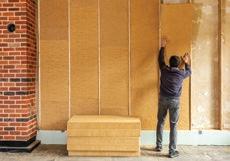
ENERGY EFFICIENCY
Increase the energy efficiency of your project and costs will be reduced by lowering fuel consumption. But this doesn’t just apply to the finished product – it applies to every part of the building development, from the equipment used to the appliances installed.
Energy efficient materials have become so mainstream there are many varieties to choose from, ranging from insulating concrete forms and low-emissivity windows to structural insulated panels.
Again, energy efficiency should be considered from the very start of the project to factor in insulation, air quality and how the property will be heated and cooled.
WASTE REDUCTION
It seems simple, but the less waste you produce the less your impact on the environment. If buildings are designed to be more adaptable and reusable, there is less need for demolition and removal.
Demolition has an enormous impact on the amount of waste initiated during a building’s lifetime and construction businesses should consider the environmental impact of materials used for developments. And obviously recycle whenever you can.
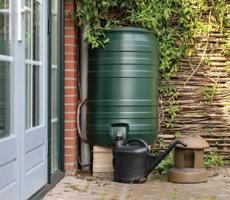
WATER CONSERVATION
An increasingly valuable resource, water supplies need to be preserved as much as possible. Sustainable water design can be incorporated throughout the building process.
The ways you can help include: implementing pressure reducing valves to reduce flow in toilets, showers and kitchens; regularly carrying out leak detection tests followed by prompt repairs when needed; using more durable service pipes to minimise leakage; and recording water use in different areas to monitor consumption.

We’ve got you covered
Storage solutions for your business
The BTS Storage Centre works mainly within the warehouse, storage & distribution sectors, we are a SEMA Approved Company and provide staff with valid SEIRS training. Working to specific SEMA codes of practice and in line with HSG76 (Warehousing & Storage HSE Guide to Health Safety) we specialise in racking, shelving, mezzanine floors and all other storage equipment and associated products. We also offer an extensive range of services that cover products such as edge protection, barriers, speed bumps, impact protection and mirrors as well as flood defence systems.
The Complete Solution
• Pallet Racking • Shelving & Longspan • Edge Protection • Mezzanine Floors • Barriers & Impact Protection • Flood Defence • Partitioning & Self Storage Units • Shelters & Bike Racks
For a site survey call 248822 or email storagecentre@btsgsy.com
Braye Road Industrial Estate, St Sampson’s Open Mon to Fri 7.30am - 5pm










